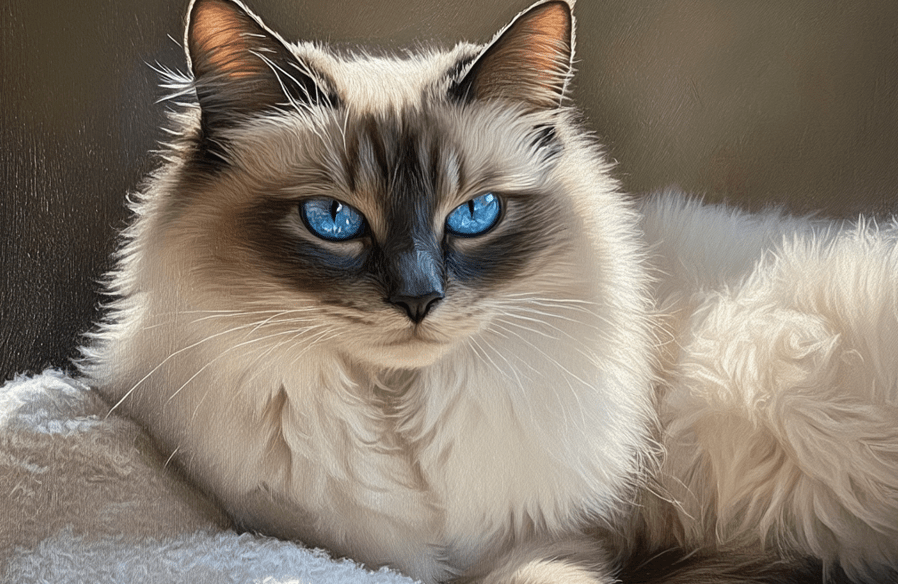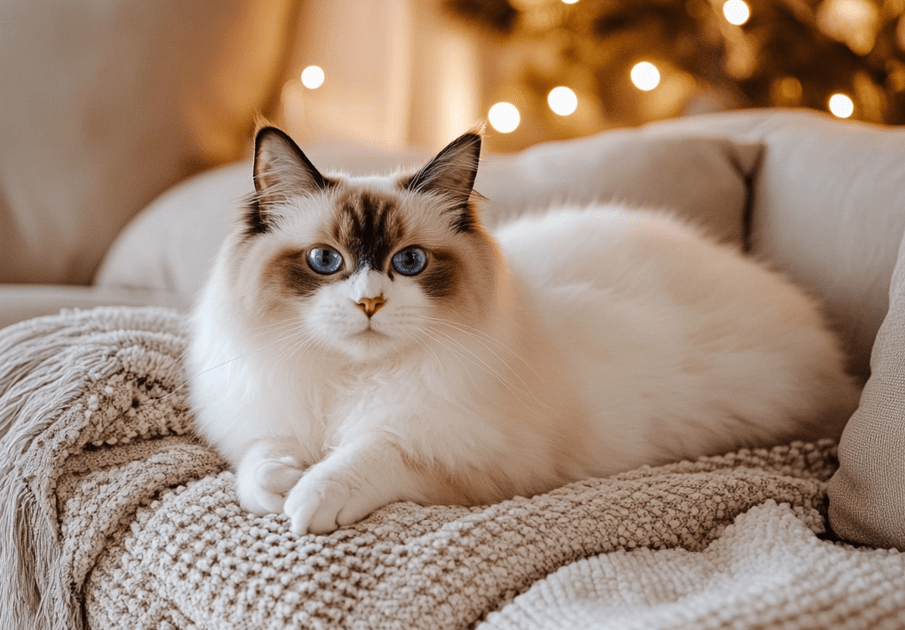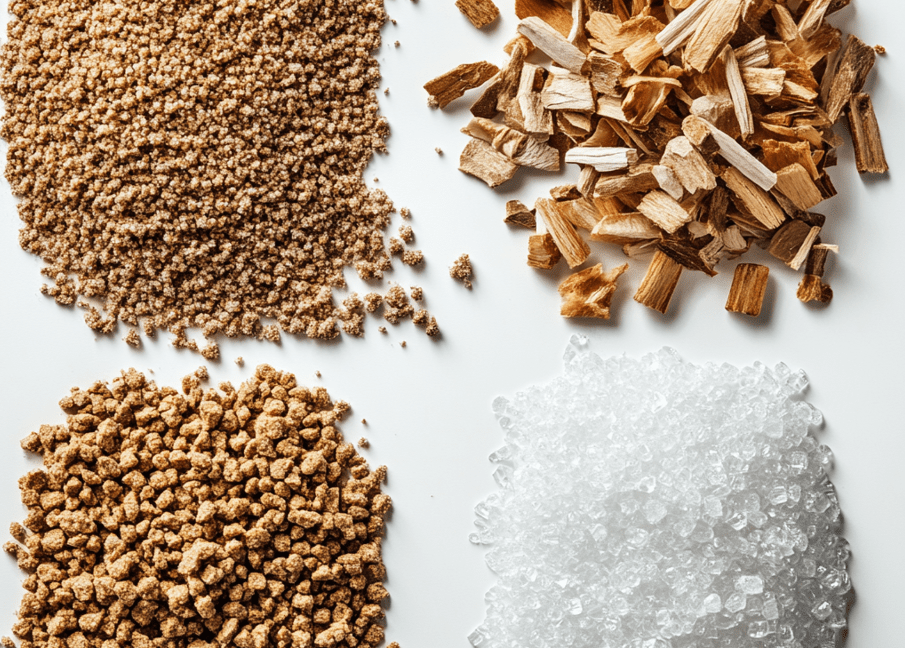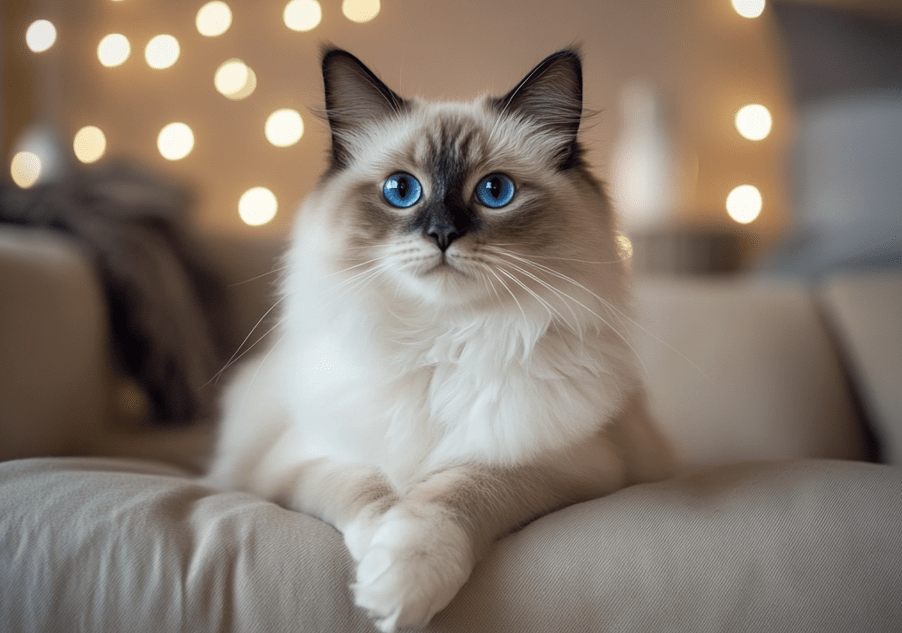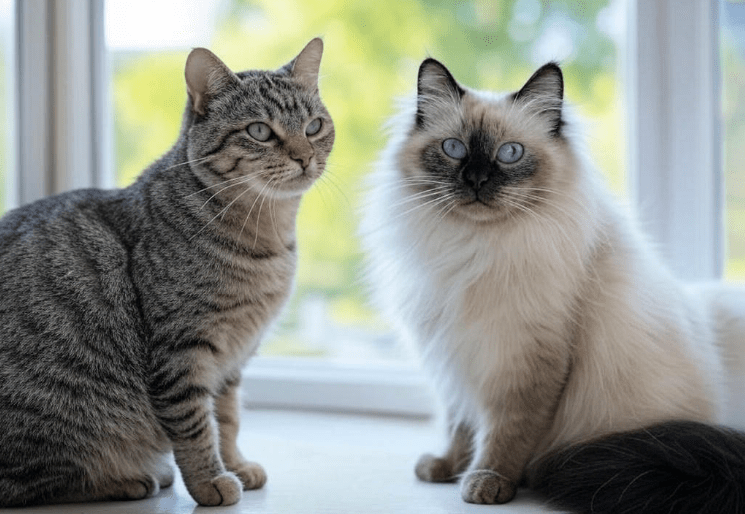
Ragdoll cats are known for their affectionate and docile nature, often melting into their owners’ arms with a purr of delight. One quirky trait that sets them apart is how your Ragdoll cat loves belly rubs, a behavior that surprises many pet owners. Unlike other breeds that may swat or scamper away, Ragdolls often roll over, exposing their fluffy bellies in a display of trust. This article explores why Ragdoll cats crave belly rubs, how this behavior reflects their personality, and how you can foster a deeper bond with your feline friend.
Understanding the Ragdoll Breed
Ragdolls are a unique breed, celebrated for their striking blue eyes, semi-long coats, and gentle temperaments. Developed in the 1960s by breeder Ann Baker, Ragdolls were selectively bred for their calm and sociable nature. Their name comes from their tendency to go limp like a ragdoll when picked up, a testament to their relaxed demeanor.
This breed’s personality plays a significant role in why a Ragdoll cat loves belly rubs. Unlike more aloof or territorial cats, Ragdolls thrive on human interaction. They are often described as “puppy-like” for their loyalty and desire to follow their owners around the house. This social nature makes them more likely to engage in vulnerable behaviors, such as exposing their bellies, which is a sign of trust in the feline world.
Key Traits of Ragdoll Cats
Affectionate: Ragdolls crave closeness and often seek out physical contact.
Trusting: They are less guarded than other breeds, making them more open to belly rubs.
Calm: Their laid-back nature reduces stress, allowing them to enjoy gentle petting.
Playful: Ragdolls often combine play with affection, rolling over during cuddle sessions.
These traits create the perfect storm for a cat that not only tolerates but actively enjoys belly rubs, a behavior that can strengthen the bond between you and your pet.
Why Does Your Ragdoll Cat Love Belly Rubs?
The act of a Ragdoll cat loving belly rubs is more than just a cute quirk—it’s a window into their emotional and physical world. Here’s a closer look at the reasons behind this behavior:
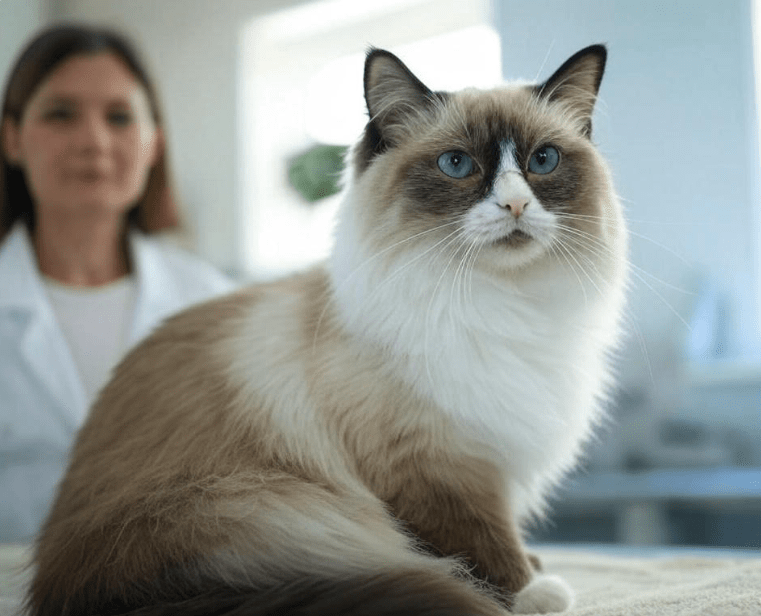
1. A Sign of Trust and Comfort
In the wild, a cat’s belly is one of its most vulnerable areas, housing vital organs. When a Ragdoll rolls over and invites a belly rub, it’s a powerful signal that they feel safe and secure in your presence. This trust is a hallmark of the Ragdoll breed, which is less prone to the wariness seen in other cats.
Ragdolls are naturally inclined to form strong bonds with their owners. By exposing their belly, they’re saying, “I trust you completely.” This gesture is especially common in environments where the cat feels relaxed, such as a quiet home with familiar faces.
2. Sensory Pleasure
A Ragdoll’s belly is covered in soft, sensitive fur that responds well to gentle touch. The act of rubbing their belly stimulates nerve endings, creating a pleasurable sensation. For many Ragdolls, belly rubs are akin to a soothing massage, especially when done with light, circular motions.
This sensory enjoyment is amplified by the Ragdoll’s calm disposition. Unlike high-strung breeds that might interpret touch as a threat, Ragdolls are more likely to lean into the experience, purring loudly as they soak up the affection.
3. Social Bonding
Ragdolls are highly social creatures that view physical touch as a form of communication. When your Ragdoll cat loves belly rubs, it’s often their way of strengthening the bond with you. In feline terms, mutual grooming or touching reinforces social ties, and belly rubs mimic this natural behavior.
This bonding aspect is particularly important for Ragdolls, who often form deep attachments to their owners. By engaging in belly rubs, you’re participating in a ritual that reinforces your cat’s sense of belonging and love.
4. Playful Invitation
Ragdolls are known for their playful streak, and rolling over for a belly rub can be an invitation to engage. Many Ragdolls combine affection with play, using belly exposure as a way to initiate a gentle wrestling match or a fun interaction. This behavior is especially common in younger Ragdolls or those with high energy levels.
If your Ragdoll playfully swats or nibbles during belly rubs, don’t be alarmed—it’s likely their way of turning the moment into a game. Always pay attention to their body language to ensure they’re enjoying the interaction.
5. Unique Breed Instincts
Unlike other breeds that may have a stronger prey drive or territorial instincts, Ragdolls were bred specifically for companionship. This selective breeding has reduced their defensive instincts, making them more open to vulnerable behaviors like belly exposure. The Ragdoll cat loves belly rubs because their genetic makeup predisposes them to trust and affection over caution.
How to Encourage Your Ragdoll to Love Belly Rubs
While many Ragdolls naturally enjoy belly rubs, some may need encouragement to feel comfortable with this form of affection. Building trust and creating positive associations are key to helping your Ragdoll embrace belly rubs. Here are some practical tips:
1. Start Slowly
If your Ragdoll is hesitant about belly rubs, begin with gentle petting on less sensitive areas, such as the head or back. Gradually move to the sides of their body, observing their reaction. If they seem relaxed, lightly stroke their belly with one or two fingers.
Avoid sudden movements or applying too much pressure, as this can startle even a trusting Ragdoll. Patience is crucial—let your cat set the pace.
2. Create a Safe Environment
Ragdolls are more likely to expose their bellies in a calm, familiar setting. Ensure their environment is free from loud noises, unfamiliar people, or other pets that might cause stress. A cozy spot on the couch or a quiet corner of the room is ideal for belly rub sessions.
3. Use Positive Reinforcement
Pair belly rubs with rewards to create a positive association. For example, offer a treat or verbal praise after a successful belly rub session. Over time, your Ragdoll will associate belly rubs with pleasant experiences, making them more likely to seek them out.
4. Read Their Body Language
Not every Ragdoll will enjoy belly rubs at all times. Pay attention to your cat’s cues to ensure they’re comfortable. Signs of enjoyment include:
1.Purring
2.Relaxed body posture
3.Kneading paws
4.Slow blinking
If your Ragdoll tenses up, flattens their ears, or swats at your hand, they may not be in the mood. Respect their boundaries and try again later.
5. Make It a Routine
Incorporate belly rubs into your daily bonding routine. For example, spend a few minutes each evening petting your Ragdoll while they’re relaxed. Consistency helps your cat feel secure and builds anticipation for these affectionate moments.
Common Misconceptions About Cats and Belly Rubs
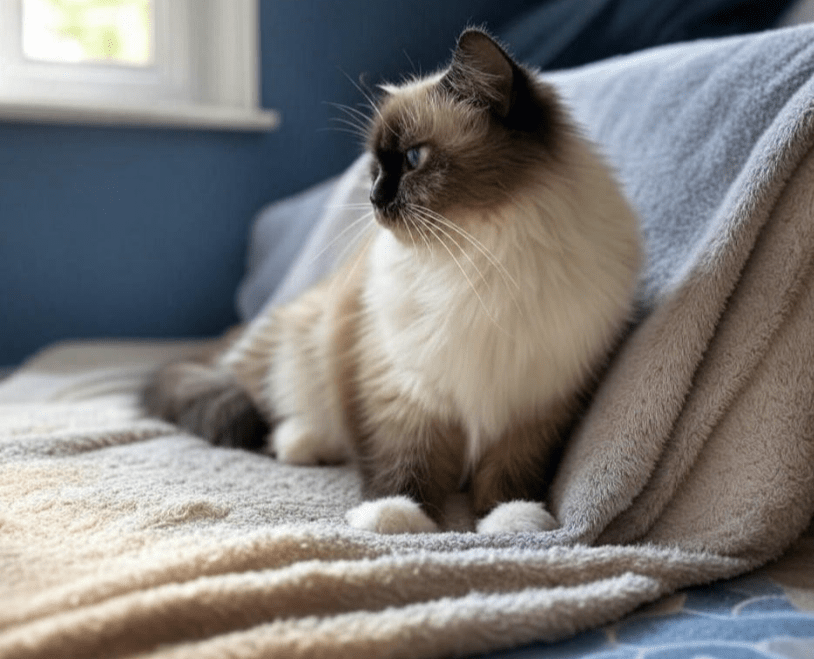
The idea that a Ragdoll cat loves belly rubs challenges common stereotypes about feline behavior. Here are some misconceptions and the truths behind them:
Misconception 1: All Cats Hate Belly Rubs
While many cats are protective of their bellies, Ragdolls are an exception. Their trusting nature and love for human interaction make them more likely to enjoy belly rubs than other breeds.
Misconception 2: Belly Exposure Always Means They Want a Rub
A cat rolling over doesn’t always mean they’re inviting a belly rub. Sometimes, it’s a defensive posture or a playful gesture. With Ragdolls, however, belly exposure is often a genuine invitation for affection, especially if accompanied by purring or relaxed body language.
Misconception 3: Belly Rubs Are Always Safe
Even with a Ragdoll, overstimulating their belly can lead to playful swats or nips. Always approach belly rubs with care, watching for signs that your cat has had enough.
The Science Behind Feline Affection
To understand why a Ragdoll cat loves belly rubs, it’s helpful to explore the science of feline behavior. Cats release oxytocin, often called the “love hormone,” during positive social interactions. When you pet your Ragdoll, especially in a way they enjoy, their brain releases oxytocin, reinforcing the bond between you.
Additionally, the tactile stimulation of a belly rub activates the parasympathetic nervous system, which promotes relaxation. This explains why many Ragdolls purr loudly or fall asleep during belly rub sessions—it’s a deeply calming experience.
The Role of Trust in Feline Behavior
Trust is a critical component of a cat’s willingness to expose their belly. Studies on feline behavior show that cats are more likely to display vulnerable behaviors in environments where they feel secure. For Ragdolls, this trust comes naturally, thanks to their bred-in sociability and calm temperament.
How Belly Rubs Benefit Your Ragdoll
Beyond being a fun and affectionate interaction, belly rubs offer several benefits for your Ragdoll’s physical and emotional well-being:
1. Stress Relief
Gentle belly rubs can reduce stress and anxiety in Ragdolls, especially in new or unfamiliar environments. The soothing touch helps lower cortisol levels, promoting a sense of calm.
2. Strengthened Bond
Regular belly rubs reinforce the emotional connection between you and your Ragdoll. This is particularly important for a breed that thrives on human companionship.
3. Physical Health Check
While giving belly rubs, you can subtly check your Ragdoll’s belly for any unusual lumps, tenderness, or skin issues. Early detection of health problems can lead to better outcomes, so use these moments to monitor their well-being.
4. Mental Stimulation
For indoor Ragdolls, belly rubs provide a form of mental and sensory stimulation. Combining rubs with play or verbal interaction keeps their minds engaged and prevents boredom.
Potential Risks and How to Avoid Them
While most Ragdolls enjoy belly rubs, there are potential risks to be aware of:
1. Overstimulation
Even a Ragdoll cat that loves belly rubs can become overstimulated. Watch for signs like twitching tails or sudden swatting, and give them a break if needed.
2. Sensitive Skin
Some Ragdolls have sensitive skin that can become irritated by excessive rubbing. Use a light touch and avoid repetitive motions in the same spot.
3. Health Issues
If your Ragdoll suddenly dislikes belly rubs or shows discomfort, it could indicate a health issue, such as digestive problems or skin allergies. Consult a veterinarian if you notice a change in behavior.
Conclusion
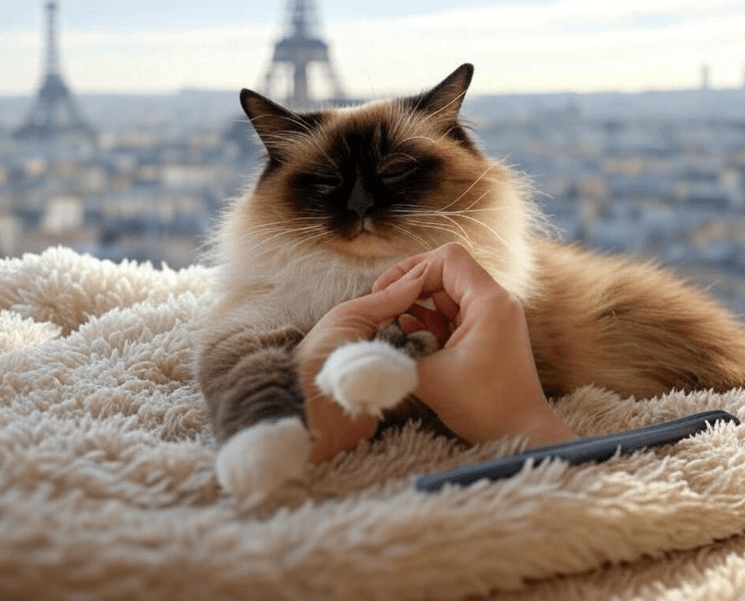
The phenomenon of a Ragdoll cat loving belly rubs is a delightful reflection of their unique personality and deep trust in their owners. By understanding the reasons behind this behavior—trust, sensory pleasure, and social bonding—you can foster an even stronger connection with your feline companion. Through patience, positive reinforcement, and respect for their boundaries, you can make belly rubs a cherished part of your Ragdoll’s routine, benefiting both their emotional and physical well-being.
Whether you’re a new Ragdoll owner or a seasoned cat lover, embracing this quirky trait can deepen your bond and bring joy to both you and your furry friend. So, the next time your Ragdoll rolls over, take it as an invitation to share a moment of trust and affection—one gentle belly rub at a time.

